The Grasses and Grains ClipArt gallery offers 423 illustrations of various types of grasses and grains, many of which are grown agriculturally for consumer use.
All illustrations in the ClipArt ETC collection are line drawings. If you are looking for color photographs of grasses, please visit the ClipPix ETC website.

Annual Spear Grass
Spear grass is a herbaceous grass often troublesome in gravel walks and on hard, dry soils. The general…
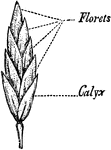
Annual Spear Grass
Spear grass is a herbaceous grass often troublesome in gravel walks and on hard, dry soils. The general…
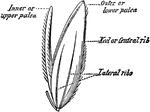
Annual Spear Grass
Spear grass is a herbaceous grass often troublesome in gravel walks and on hard, dry soils. The general…

Annual Spear Grass
Spear grass is a herbaceous grass often troublesome in gravel walks and on hard, dry soils. The general…

Annual Spear Grass
Virginia Cut Grass (Leersia Virginica) is a small flowered white grass, and is smoother than white grass…
Barley
Barley is a cereal grain derived from the annual grass Hordeum vulgare, a common barley. It serves as…

Barley
Barley is a cereal grain derived from the annual grass Hordeum vulgare, a common barley. It serves as…
Beach Grass
Beach Grass (Calamagrostis arenaria or Ammophila arundinacea), also known as Seasand Reed and Mat Grass,…
Bearded Darnel
The Bearded Darnel (Lolium temulentum) is sometimes found in grain-fields, with its glume equalling…
Black Oat Grass
Black Oat Grass (Stipa avenacea) is found in dry, sandy woods and has no agricultural value. It grows…

Black Oat Grass
Black Oat Grass (Stipa avenacea) is found in dry, sandy woods and has no agricultural value. It grows…
Chess Grass
The Chess Grass (Bromus secalinus), also called Willard's Bromus, has a spreading, slightly drooping…
Chess Grass
The Chess Grass (Bromus secalinus), also called Willard's Bromus, has a spreading, slightly drooping…

Chess Grass
The Chess Grass (Bromus secalinus), also called Willard's Bromus, has a spreading, slightly drooping…
Chess Grass
The Chess Grass (Bromus secalinus), also called Willard's Bromus, has a spreading, slightly drooping…

Chinese Sugar Cane
The stem of Chinese Sugar Cane (Sorghum nigrum), also known as Sorgho, or Sorgho Sucre, rises from six…
Common Millet
The Common Millet (Panicum miliaceum) flowers in large, open, nodding panicles. The leaves are lance-shaped…
Couch Grass
Couch Grass (Triticum repens) is also referred to as Quitch Grass, Twitch Grass, Dog Grass, and Chandler…

Couch Grass
Couch Grass (Triticum repens) is also referred to as Quitch Grass, Twitch Grass, Dog Grass, and Chandler…
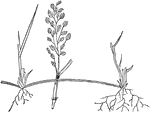
Creeping Meadow Grass
Creeping Meadow Grass (Eragrostis reptans) is found on the gravelly banks of rivers, from New England…
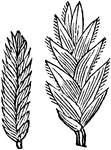
Creeping Meadow Grass
Creeping Meadow Grass (Eragrostis reptans) is found on the gravelly banks of rivers, from New England…

Creeping Meadow Grass
Creeping Meadow Grass (Eragrostis reptans) is found on the gravelly banks of rivers, from New England…

Creeping Meadow Grass
Creeping Meadow Grass (Eragrostis reptans) is found on the gravelly banks of rivers, from New England…

Creeping Meadow Grass
Creeping Meadow Grass (Eragrostis reptans) is found on the gravelly banks of rivers, from New England…

Creeping Meadow Grass
Creeping Meadow Grass (Eragrostis reptans) is found on the gravelly banks of rivers, from New England…

Creeping Soft Grass
The Creeping Soft Grass (Holcus mollis) is of no value, and is regarded as a troublesome weed. It is…
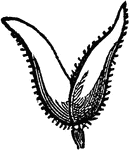
Creeping Soft Grass
Creeping Soft Grass or Creeping Velvet Grass is a species of grass, native to Europe and western Asia.
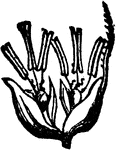
Creeping Soft Grass
It is favored by conditions in woodland clearings and at the earl stages of coppicing. Growth and flowering…
Crested Dog's Tail
The spikes of the Crested Dog's Tail Grass (Cynosurus cristatus) are simple and its spikelets awnless.…
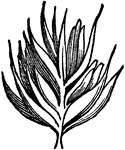
Crested Dog's Tail
The spikes of the Crested Dog's Tail Grass (Cynosurus cristatus) are simple and its spikelets awnless.…
Downy Oat Grass
The Downy Oat Grass (Trisetum pubescens) is naturalized in chalky soils and on such soils its leaves…

Fescue Grass
"Fescue-grass (Festuca pratensis). A, spikelet; B, a flower, the lodicules in front and the palea behind;…
Finger-spiked Wood Grass
Fiinger-spiked Wood Grass (Andropogon furcatus) grows about four feet high. The leaves are smooth, the…

Finger-spiked Wood Grass
Fiinger-spiked Wood Grass (Andropogon furcatus) grows about four feet high. The leaves are smooth, the…

Finger-spiked Wood Grass
Fiinger-spiked Wood Grass (Andropogon furcatus) grows about four feet high. The leaves are smooth, the…

Finger-spiked Wood Grass
Fiinger-spiked Wood Grass (Andropogon furcatus) grows about four feet high. The leaves are smooth, the…

Fiorin Grass
Fiorin Grass (Agrostis stolonifera) is a variety of English bent. In experiments it was found to be…

Fiorin Grass
Fiorin Grass (Agrostis stolonifera) is a variety of English bent. In experiments it was found to be…
Floating Foxtail Grass
The Floating Foxtail (Alopecurus geniculatus) has a stem ascending, bent, and forming knees at the lower…

Floating Foxtail Grass
The Floating Foxtail (Alopecurus geniculatus) has a stem ascending, bent, and forming knees at the lower…
Floating Meadow Grass
Floating Meadow Grass (Glyceria fluitans), also know as Common Manna Grass, grows in very moist muddy…
Floating Meadow Grass
Floating Meadow Grass (Glyceria fluitans), also know as Common Manna Grass, grows in very moist muddy…

Fowl Meadow
Fowl Meadow Grass (Poa serotina), also called False Redtop, has two to four spikelets (shown here),…

Fowl Meadow
Fowl Meadow (Poa serotina), also called False Redtop, has two to four spikelets, sometimes five flowered.…

Fowl Meadow
Fowl Meadow (Poa serotina), also called False Redtop, has two to four spikelets, sometimes five flowered.…
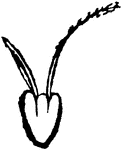
Fowl Meadow
Fowl Meadow (Poa serotina), also called False Redtop, has two to four spikelets, sometimes five flowered.…

Fowl Meadow
Fowl Meadow (Poa serotina), also called False Redtop, has two to four spikelets, sometimes five flowered.…
Goose Grass
Goose Grass (Glyceria maritima), also called Creeping Sea Meadow Grass, or Sea Spear Grass, appears…

Goose Grass
Goose Grass appears around salt marshes, growing from six to twelve inches high and having a perennial…

Hungarian Grass
Hungarian Grass (Panicum Germanicum) is an annual forage plant. It germinates readily, withstands the…

Indian Rice Grass
Indian Rice Grass (Zizania aquatica), also known as Wild Rice, or Water Oats, is found in swampy borders…
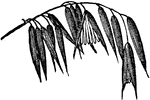
Indian Rice Grass
Indian Rice Grass (Zizania aquatica), also known as Wild Rice, or Water Oats, is found in swampy borders…

Indian Rice Grass
Indian Rice Grass (Zizania aquatica), also known as Wild Rice, or Water Oats, is found in swampy borders…
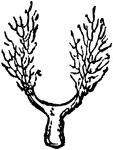
Indian Rice Grass
Indian Rice Grass (Zizania aquatica), also known as Wild Rice, or Water Oats, is found in swampy borders…
Indian Rice Grass
Indian Rice Grass (Zizania aquatica), also known as Wild Rice, or Water Oats, is found in swampy borders…
Indian Rice Grass
Indian Rice Grass (Zizania aquatica), also known as Wild Rice, or Water Oats, is found in swampy borders…
Indian Rice Grass
Indian Rice Grass (Zizania aquatica), also known as Wild Rice, or Water Oats, is found in swampy borders…
Italian Rye Grass
Italian Rye Grass (Lolium Italicum) differs from the Perennial Rye Grass in the florets having long,…

